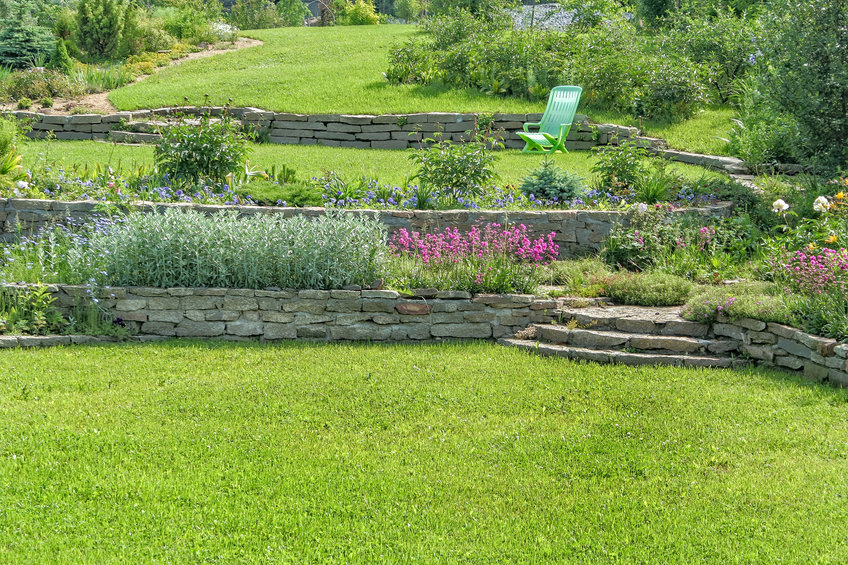Different Methods Used to Construct a Retaining Wall
- Dry Stack

Dry stack retaining walls are a great way to add some character and definition to your landscape. Unlike traditional retaining walls that use mortar or some other type of adhesive, dry stack walls rely on the weight of the rocks themselves to hold the wall in place. This makes them an appealing option for homeowners who want a natural look for their landscaping. In addition, they are a lot easier and cheaper to build than traditional walls.
- Mortared Block
Mortared block retaining walls are a type of gravity wall. They rely on the weight of the blocks or bricks to hold the structure together. This makes them a good option for areas that may experience occasional flooding, as the water will simply run off the surface rather than seeping into the wall and causing it to crumble. Additionally, mortared block walls are relatively inexpensive, easy to construct, and can be built in a variety of shapes and sizes. However, they do require regular maintenance to keep them looking their best.
Factors to Consider When Building a Retaining Wall
There are many factors to consider when building a retaining wall. The most important factor is the stability of the soil and the stability of the wall. Other elements include the cost, type of wall, and color. You also need to decide if you want a permanent or temporary wall. Each factor has its own pros and cons, so it is important to weigh all your options before you make a decision.
- Trench Width
If you are needing to install a retaining wall, one of the decisions you will need to make is how wide the trench should be. The trench width will depend on the size and weight of the blocks or bricks that you are using for your wall. In general, the trench should be twice as wide as the blocks or bricks that you are using. However, if you are using a particularly heavy block, you may need to widen the trench even more.
- Drainage
If you are installing a retaining wall, it is important to take steps to ensure proper drainage. Without adequate drainage, the soil behind your wall can become waterlogged, leading to possible erosion and damage to your wall. There are several things you can do to set up retaining wall drainage, including installing a perforated pipe beneath the wall and using a gravel backfill. By taking these steps, you can help keep your wall in good condition for years to come.
- Type of Retaining Blocks
Some people prefer concrete blocks because they are sturdy and long-lasting, while others might choose wood or vinyl blocks because they are more affordable. No matter which type of block you choose, be sure to consult with a professional before starting your project. They can help you select the right blocks and give you advice on how to install them properly.
- Backfilling Material
There are varieties of materials that can be used for backfilling a retaining wall. One good option is crushed stone. It is a durable and cost-effective option that can help keep your retaining wall strong and stable.
Building a retaining wall can be a daunting task. You need to consider several factors like the type of wall, the soil conditions, and the materials you will use. This article has discussed some of the most common types of retaining walls and outlined the pros and cons of each. We have also given different things to look out for before constructing a retaining wall. Therefore, whether you are planning to build a retaining wall yourself or hire a professional, this article should have been of assistance to you. However, one thing you may have realized is that building a retaining wall is no easy task. Therefore, you might want to seek the services of professional builders to help you out. They have the needed expertise to do a splendid job for you.
